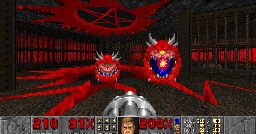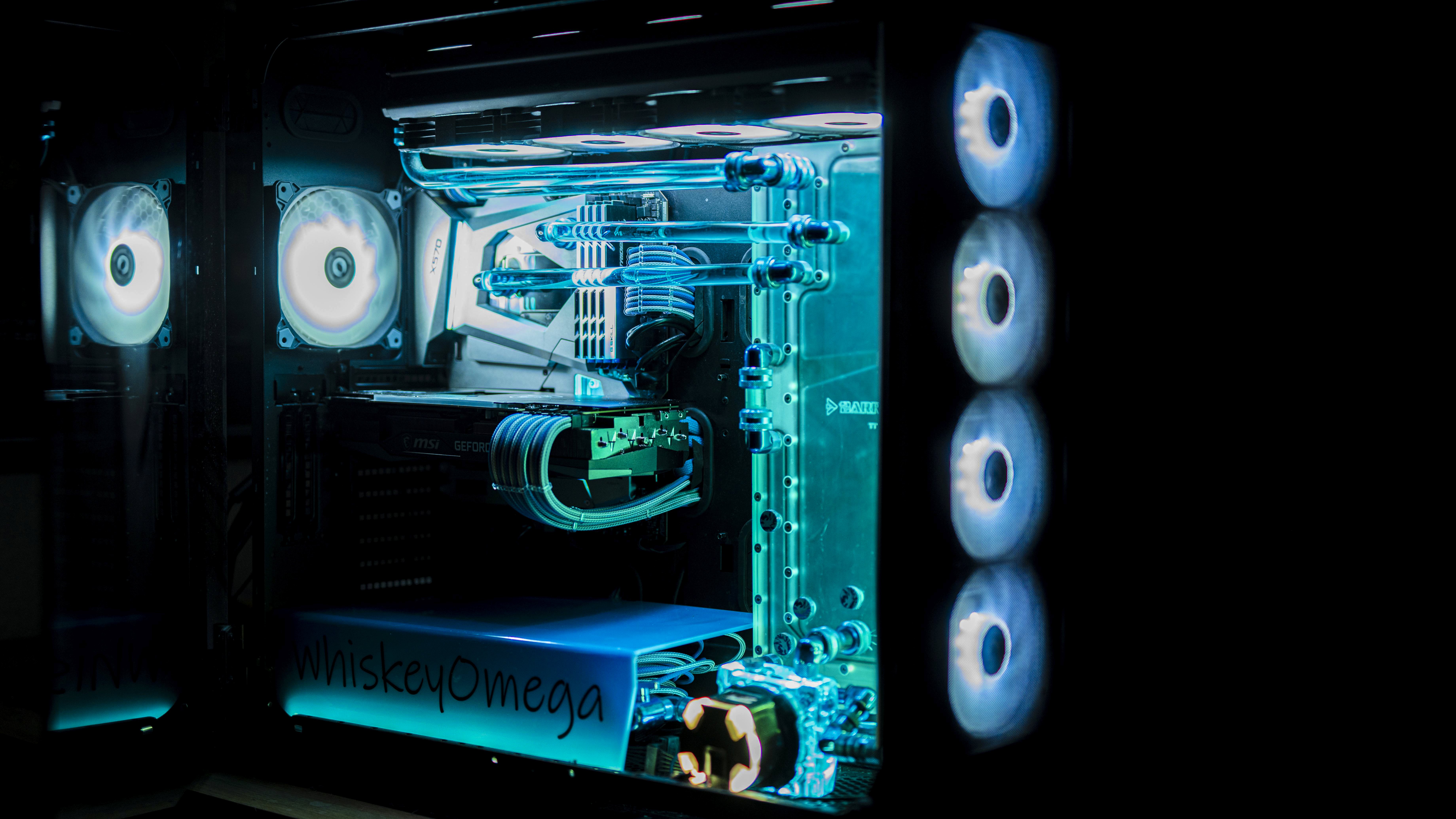Hackers demand France’s Schneider Electric pay a $125k ransom in baguettes
 MHLoppy@fedia.io to
MHLoppy@fedia.io to 

Currently studying CS and some other stuff. Best known for previously being top 50 (OCE) in LoL, expert RoN modder, and creator of RoN:EE's community patch (CBP).
(header photo by Brian Maffitt)
 MHLoppy@fedia.io to
MHLoppy@fedia.io to 

 MHLoppy@fedia.io to
MHLoppy@fedia.io to 

 MHLoppy@fedia.io to
MHLoppy@fedia.io to 

 MHLoppy@fedia.io to
MHLoppy@fedia.io to 

 MHLoppy@fedia.io to
MHLoppy@fedia.io to 

 MHLoppy@fedia.io to
MHLoppy@fedia.io to 

 MHLoppy@fedia.io to
MHLoppy@fedia.io to 

 MHLoppy@fedia.io to
MHLoppy@fedia.io to  PC Gaming@kbin.social – 3 points –
PC Gaming@kbin.social – 3 points – UPDATE: the shutdown has been (for now) retracted.
The admin (jerry) has switched from kbin to a fork called mbin that has apparently been able to integrate changes faster than the base kbin project. Jerry seems satisfied with the number of issues fixed in the fork (for now), so has retracted the shutdown announcement (for now).
FEDIA.IO update!!!
After I made the announcement about shutting down fedia.io, someone pointed out that Melroy, a very active developer on kbin, forked kbin to mbin. I just migrated to mbin and so far it seems to have resolved all the problems I've seen. It's likely too early to tell, but I think that Melroy is VERY responsive and helpful, so I am retracting my shutdown announcement. And that makes me very happy.
https://infosec.exchange/@jerry/111235153655966812
Followup: https://fedia.io/m/fedia/t/350673 tl;dr retraction has become more concrete. No need for the "for now" qualifier anymore.
They were careful with how they phrased it, leaving the possibility of a refresh without a performance uplift still on the table (as speculated by media). It looks like the OLED model's core performance will be only marginally better due to faster RAM, but that the APU itself is the same thing with a process node shrink (which improves efficiency a little).
See also: PCGamer article about an OLED version. They didn't say "no", and (just like with the previously linked article), media again speculated about a refresh happening.
It looks like they were consistent with what they were talking about with how it wasn't simple to just drop in a new screen and leave everything else as-is, and used that opportunity to upgrade basically everything a little bit while they were tinkering with the screen upgrade.
Yes, though just nitro basic. Discord doesn't show ads and claims to not sell my data. While I can afford to do so, I'd much rather pay a few bucks a month to keep it that way.
The number of people in this thread aggressively against a free-to-use service having any kind of way to pay employees and server bills makes me fucking depressed, and helps to explain why most free services I enjoy never seem to stay afloat with just an optional payment-based membership thing.
Edit: To people suggesting less corporate-based (whether FOSS or not) alternatives, that's totally cool! Just remember that the people behind these projects need some way to pay the bills the same way the corporate ones do, so I encourage you to contribute to them, whether that's through e.g., code improvements (which doesn't pay bills but is still helpful!) or plain old donations.
I'm not sure it qualifies as "reverse review bombing" if the recent review +/- percentage matches the all-time percentage. There's just more reviews because of the shutdown, the ratio of positive vs negative hasn't meaningfully changed (97% positive overall, 97% positive recently).
The agency had learned about a semitrailer coming across the Mexican border, and agents tracked the drugs to the farmers market, said DEA Special Agent in Charge Robert Murphy. The drugs were found inside the truck, he said.
“This was contained in a cover load of celery,”
So unfortunately not inside the celery itself, which would of course be significantly more fun :(
The advertised “regular device upgrades” will never happen for anyone as part of Pixel Pass, even customers who battled Google’s servers to order a Pixel 6 the moment they became available (it’s me; I’m one of those people) because there’s still more than a month to go before the very first customers in would cross the two-year mark and be eligible to upgrade.
So a core part of the premise of Pixel Pass (device upgrades) is being lost, even to existing Pixel Pass users.
Original marketing from 2021:
Pixel Pass brings together the latest Pixel phone with Google’s best mobile services, device protection and regular device upgrades — all in one easy subscription. (emphasis added)
Rise of Nations (originally released back in 2003) had/has some interesting ideas to reduce some of the busywork:
For the most part, none of the implemented options are strictly better than micromanaging them yourself:
But the options are there when you need them, which I think is a a nice design. It doesn't completely remove best-in-class players being rewarded for their speed as a player, but does raise the "speed floor", allowing slower players to get more bang for their buck APM-wise, and compete a bit more on the strategy/tactics side of the game instead.
It depends a lot on what's being encoded, which is also why different people (who've actually tested it with some sample images) give slightly different answers. On "average" photos, there's broadly agreement that WebP and MozJpeg are close. Some will say WebP is a little better, some will say they're even, some will say MozJpeg is still a little better. Seems to mostly come down to the samples tested, what metric is used for performance, etc.
I (re)compress a lot of digital art, and WebP does really well most of the time there. Its compression artifacts are (subjectively) less perceptible at the level of quality I compress at (fairly high quality settings), and it can typically achieve slightly-moderately better compression than MozJpeg in doing so as well. Based on my results, it seems to come down to being able to optimize for low-complexity areas of the image much more efficiently, such as a flatly/ evenly shaded area (which doesn't happen in a photo).
One thing WebP really struggles with by comparison is the opposite: grainy or noisy images, which I believe is a big factor in why different sets of images seems to produce different results favoring either WebP or JPEG. Take this (PNG) digital artwork as an extreme example: https://www.pixiv.net/en/artworks/111638638
This image has had a lot of grain added to it, and so both encoders end up with a much higher file size than typical for digital artwork at this resolution. But if I put a light denoiser on there to reduce the grain, look at how the two encoders scale:
Subjectively I have a preference for the visual tradeoffs on the WebP version of this image. I think the minor loss of details (e.g., in her eyes) is less noticeable than the JPEG version's worse preservation of the grain and more obvious "JPEG compression" artifacts around the edges of things (e.g., the strand of hair on her cheek).
And you might say "fair enough it's the bigger image", but now let's take more typical digital art that hasn't been doused in artificial grain (and was uploaded as a PNG): https://www.pixiv.net/en/artworks/112049434
Subjectively I once again prefer the tradeoffs made by WebP. Its most obvious downside in this sample is on the small red-tinted particles coming off of the sparkler being less defined, [see second edit notes] probably the slightly blockier background gradient, but I find this to be less problematic than e.g., the fuzz around all of the shooting star trails.. and all of the aforementioned particles.
Across dozens of digital art samples I tested on, this paradigm of "WebP outperforms for non-grainy images, but does comparable or worse for grainy images" has held up. So yeah, depends on what you're trying to compress! I imagine grain/noise and image complexity would scale in a similar way for photos, hence some of (much of?) the variance in people's results when comparing the two formats with photos.
Edit: just to showcase the other end of the spectrum, namely no-grain, low complexity images, here's a good example that isn't so undetailed that it might feel contrived (the lines are still using textured [digital] brushes): https://www.pixiv.net/en/artworks/112404351
I quite strongly prefer the WebP version here, even though the JPEG is 39% larger!
Edit2: I've corrected the example with the sparkler - I wrote the crossed out section from memory from when I did this comparison for my own purposes, but when I was doing that I was also testing MozJpeg without chroma subsampling (4:4:4 - better color detail). With chroma subsampling set to 4:2:0, improved definition of the sparkler particles doesn't really apply anymore and is certainly no longer the "most obvious" difference to the WebP image!
Unless you're also throwing money at YouTube premium (etc), isn't this by definition unsustainable to do? So it's not really a viable long-term strategy either.
Like don't get me wrong, I don't want all the tracking and stuff either, but somebody has to pay those server bills. If it's not happening through straight cash then it's going to be through increasingly aggressive monetization and cost-cutting strategies.
As an aside, you can edit your submission title on lemmy/kbin/mbin.
It isn't new, and framing it as though it were seems rather disingenuous.
Archive link from two years ago : https://web.archive.org/web/20211208000349/https://www.reddit.com/community-points/documentation/introduction
You seem to be using the term "open source" for what is instead commonly called "source-available", which has a distinct meaning from open source.
[Source-available software] includes arrangements where the source can be viewed, and in some cases modified, but without necessarily meeting the criteria to be called open-source.
[Open-source software] is released under a license in which the copyright holder grants users the rights to use, study, change, and distribute the software and its source code to anyone and for any purpose.
edit: fixed duplicated phrasing
Then let's transcribe part of the opening:
I know what you're thinking -- it's a stupid question, it's an FPS. It's the definitive FPS. And it's a fair point. DOOM ticks all the boxes required for a reasonable definition of a first person shooter. It's presented from a first-person perspective, and shooting the bad guys is a key part of it. But the FPS genre didn't exist when DOOM was released. The term "first person shooter" wasn't common until a few years later.
So what genre was DOOM? How was it originally described?
Edit I've now understood that quoting most of the video's opening salvo has unfortunately misrepresented the video's contents to the people who are still trying to leave comments without actually watching it. It's a video about what DOOM's genre is and what DOOM's genre was, not only the latter. The title looks clickbait-y but is honestly pretty accurate regarding the subject of the video.
Patch notes have 3 weapons/stratagems getting nerfed vs 5 weapons/stratagems getting buffed. I don't own the game but it sounds like they're already hitting it from both sides? If they do nothing but buffs there's a huge risk of just powercreeping everything.
Or 53.6 degrees Fahrenheit if you believe whoever wrote the page for Nissan lmao. I guess they just typed it into a converter with no context, and the converter spat out an answer amounting to "if your thermometer says it's 12 degrees C, that would be 53.6 degrees F"... but without that context.
"Comma-la" unfortunately doesn't help much for people without US accents lol (though of course people in the US are who the question and answer are most relevant to). On first reading -- without the accent or something close to it -- it implies "kom-uh-luh", whereas with the accent it implies something more like "kah-muh-luh", just based on how people pronounce "comma" differently.
Sure, but not much of that battery improvement is coming from migrating the APU's process node. Moving from TSMC's 7nm process to their 6nm process is only an incremental improvement; a "half-node" shrink rather than a full-node shrink like going from their 7nm to their 5nm.
The biggest battery improvement is (almost definitely) from having a 25% larger battery (40Whr -> 50Whr), with the APU and screen changes providing individually-smaller battery life improvements than that. Hence the APU change improving efficiency "a little".
Users will keep their exisiting email addresses on this service, and would get it free for the first year. After that, there will be options of paying for a service, or an ad-based free service after that.
This makes me not understand many of the complaints?
“It’s a nightmare trying to change logins at many places.”
"I’ve got to go to all of those and say I’ve changed my email address."
Just.. keep using the same email address?
Zenfone did have its 3.5mm jack and optical stabilization as relatively unique in its class (though I don't personally know much about how well EIS does vs OIS these days).
There's currently no implementation (the repos are currently just skeletons), so it could just be a semantics difference right now.
A number of these alternatives exist but the reality is that if a creator advertises Patreon vs advertises Liberapay (or another alternative) you get more people signing up for the Patreon because it has better name recognition / marketing / whatever. In my opinion they got to their dominant position mostly* because "we" let them, and they also stay there because "we" let them.
*And partly because they were one of the earlier platforms (but by no means the first option for crowd-sourced financial support for creators), and they also started with lower fees than they have these days.
There is no long tail for multiplayer-only games. You succeed wildly, right off the bat, or you die.
Now and then a game seems to buck this trend (Among us blew up after 2 years, Goose Goose Duck after 1 year). So there are exceptions to this rule, but I imagine it's increasingly hard to pull off the larger the studio's costs are.
I think in this context (particularly with a very quick skim of the paper for some additional context), it it might be more helpful to think of air "powering" this design in the same way that electricity "powers" things. The focus isn't on the energy source, it's on the structural design of the "robot" itself.
Consider it another way: if their system/model/whatever designed a conventional electrically-powered robot without also designing an electrical generator or batteries etc, would you still discount it as "not being a robot"? The problem might be in our expectation based on the language being used. I might also be full of crap haha, but hopefully that's another perspective to consider.
It's worth noting that since FedSearch, Mastodon has actually natively implemented opt-in search on posts.
Different sources claim different numbers, but the rate is considered by most sources to be low.
While the statistics on false allegations vary – and refer most often to rape and sexual assault – they are invariably and consistently low. Research for the Home Office suggests that only 4% of cases of sexual violence reported to the UK police are found or suspected to be false. Studies carried out in Europe and in the US indicate rates of between 2% and 6%.
https://theconversation.com/heres-the-truth-about-false-accusations-of-sexual-violence-88049
There are types of time management which I think can still be interesting. For example, are you able to afford -- in the resources of time and attention -- optimally micro'ing this important fight? Or are you going to have to yolo it a bit so that you can do multi-task economic tasks at the same time?
Some (much?) of the problem is that (for better or worse) skilled players can and will squeeze the game to optimality in terms of win rate, and that tends to collapse viable tactical and strategic choices. Once those choices have been optimised (the game is largely "solved"), the main way to get better is by being faster, not by being smarter.
Intel fumbled hard with some of their recent NICs including the I225-V,[1][2] which took them multiple hardware revisions in addition to software updates to fix.
AMD also had to be dragged kicking and screaming to support earlier AM4 motherboard buyers to upgrade to Ryzen 5000 chips,[3][4] and basically lied to buyers about support for sTRX4, requiring an upgrade from the earlier TR4 to support third-gen Threadripper but at least committing to "long-term" longevity in return.[5][6] They then turned around and released no new CPUs for the chipset platform, leaving people stranded on it despite the earlier promises.[7]
I know it's appealing to blindly trust one company's products (or specific lineup of products) because it simplifies buying decisions, but no company or person is infallible (and companies in particular are generally going to profit-max even at your expense). Blindly trusting one unfortunately does not reliably lead to good outcomes for end-users.
edit: "chipset" (incorrectly implying TRX40) changed to "platform" (correctly implying sTRX4); added explicit mention of "AM4" in the context of the early motherboard buyers.
FYI if you're one of the people who just sees an image, the original includes a link to this:
Submitted for good faith discussion: Substack shouldn’t decide what we read. The reason it caught my attention is that it's co-signed by Edward Snowden and Richard Dawkins, who evidently both have blogs there I never knew about.
I'm not sure how many of the people who decide to comment on these stories actually read up about them first, but I did, such as by actually reading the Atlantic article linked. I would personally feel very uncomfortable about voluntarily sharing a space with someone who unironically writes a post called "Vaccines Are Jew Witchcraftery". However, the Atlantic article also notes:
Experts on extremist communication, such Whitney Phillips, the University of Oregon journalism professor, caution that simply banning hate groups from a platform—even if sometimes necessary from a business standpoint—can end up redounding to the extremists’ benefit by making them seem like victims of an overweening censorship regime. “It feeds into this narrative of liberal censorship of conservatives,” Phillips told me, “even if the views in question are really extreme.”
Structurally this is where a comment would usually have a conclusion to reinforce a position, but I don't personally know what I support doing here.
I wonder if patch support being pulled after 2 months is down to lower-than-expected sales; it's certainly earlier than I would've expected on both the dev (HBS) and publisher (Paradox) side.
Edit: related news from October that I didn't know about.
Fair point, but I guess I would hope that the person being paid to write the copy would check it, since getting that right seems like it's part of their job description ¯\_(ツ)_/¯
Fwiw I also had ongoing issues with the ZF9 pocket-dialing. Ymmv of course, but I haven't had it happen ever since changing its position in my pocket from [up facing up and screen facing me] to [up facing up and screen facing away from me]. It's been at least several months since I made the change, so maybe it will help some of the people having the issue?
Probably a quirk of having different software. I'm on Fedia which runs on mbin, as does kbin.run which MBM is on. You're on lemmy, so I guess something was just handled differently for you (and most users!) vs kbin/mbin users.
This just seems equivalent to e.g. bing's AI search. The only thing that stands out to me are the names of their investors, not the product - they're not advertising themselves as privacy-respecting, for example.
P.s. you have your markdown reversed with the links - the text needs to be in the square brackets with the link in the parentheses. [text](https://example.com)
For those on platforms that can't see the link: https://12ft.io/https://www.thedailybeast.com/jd-vance-told-his-son-to-shut-the-hell-up-about-pokemon-while-talking-to-trump
But the winky face shows how serious they're being!?
A search engine for it was released (or at least promoted to me) recently - should be helpful for that: https://sepiasearch.org/
Yes: https://apnews.com/article/onion-buys-infowars-alex-jones-6496f198d141c991087dcd937b3588e9